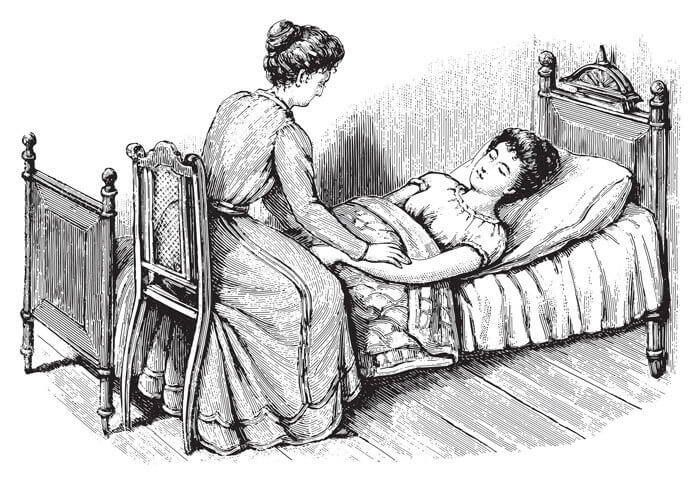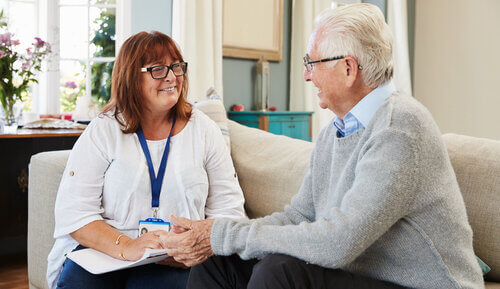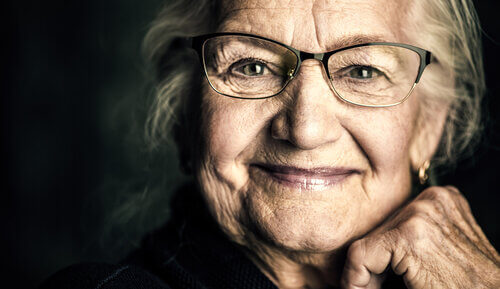Looking back through history, home care did not exist for thousands of years. The responsibility for caring for older or ill people lay predominantly with their family and local community.

Page contents
Care in the community
Long before the Industrial Revolution brought people into cities, people would often spend their whole lives in the same area. A huge benefit of this settled way of life was the strong links with the local community. Living closely together in groups, first in tribes, later in farming communities and small towns, meant people knew and supported each other.
In those times, life expectancy was much shorter and few illnesses had a cure. For the lucky ones who reached old age, care would fall to their children and grandchildren. Having daughters was particularly useful to this end. They were less likely to work, and there were plenty of women whose own children were grown up who had the time and experience to care for their elderly neighbours.
Bloodletting and leeches
In the middle ages, illness was hardly understood at all. Home care was more likely to take the form of prayer, bloodletting or applying leeches, rather than anything really useful. Some people would summon healers to their homes. These ‘wise women’ had knowledge passed down through generations. They would use herbal remedies and superstitious rituals to do the best they could. These healers became targets for witch hunters looking to blame someone for the very illnesses they were doing their best to treat.
Rich and poor divide
Until 1601, home care outside friends and family was mostly accessible only to the wealthy. Those with money could afford to hire servants to care for older or ailing relatives. These servants usually lived in the family home. This was well and good for their employer, but meant that they weren’t around to care for their own families.
Doctors, or physicians, generally did home visits but again these cost the patient money which many simply didn’t have.
Act of Relief for the Poor
In 1601, the Act of Relief for the Poor was passed, legislation which aided those who could not work. Every parish in England was now responsible for its parishioners who were too old, ill or disabled to work. This was done by providing either ‘indoor relief’, i.e. housing in a hospital, almshouse or early workhouse, or ‘outdoor relief’. Outdoor relief provided food, clothes, sometimes money and other necessities like kindling for the fire to people in their own homes.
From 1885, free outpatient health care was available to people who could not afford it under an amendment to the old Poor Law. At this point, history shows that most home care was still delivered by charities, many of them religious. Poverty was a large-scale problem in Victorian Britain. A list from 1865 counts well over 400 charities in London alone. Most were for the benefit of the poor, orphans, the disabled or the elderly.
The 1929 Local Government Act enabled but didn’t force local authorities to care for elderly.
Impact of the Second World War
In the 1940s, Dr Marjory Warren brought the medical world’s attention to specialist care for the elderly. She was disturbed to find elderly hospital patients with particular needs, such as those with dementia, on the same large wards as patients with completely different needs, such as mothers who had recently given birth.
Warren argued that specialist geriatric care was needed, both in hospital and once elderly patients were discharged to their own homes. In 1947, she and seven other doctors founded what is now called the British Geriatrics Society.
Meals on Wheels
During the war, the first meals on wheels service began for people who had lost their homes in the Blitz. In 1948, the 1946 National Assistance Act was implemented by the Labour Government that made it law for local authorities to be responsible for care for those who could not afford it.
Community care grew rapidly at this time because there was little money to build hospitals and care homes after the war. Britain encouraged immigration to fill jobs. The Empire Windrush ship brought people from all over the Commonwealth, including skilled nurses. Local authorities were encouraged to provide day care centres as part of their home care services and began creating plans to help people to stay in their own homes for as long as possible.
Legal reforms
In 1968, Harold Wilson’s Labour Government passed the Health Services and Public Health Act, which came into effect in 1971. This enabled local authorities to expand their home care, including providing care workers to visit older and disabled people in their homes and carry out support for day to day living, such as cleaning and laundry. In turn, the care workers themselves could be paid for this. Also in 1971 came the introduction of Attendance Allowance, a benefit to help people who were aged over 65 and in need of care to finance it and stay living at home.
In the 1980s, Margaret Thatcher invited Sir Roy Griffiths to put together a report on community care. Using his recommendations, the Conservative Government then put together the 1989 White Paper, a plan of action for home care including funding, development of needs assessments and expansion of domiciliary, day and respite care. The paper was put into practice in the 1990 Community Care Act.
Growth of the home care sector
The home care sector grew rapidly throughout the 1990s and 2000s. In 2002, the Care and Social Services Inspectorate Wales (CSSIW), now called Care Inspectorate Wales, was established to regulate and inspect all home care providers in Wales. The Health and Social Care Act 2008 resulted in the English equivalent, the Care Quality Commission, and Scotland followed in 2011 with the Care Inspectorate.
Scotland made personal care to people aged 65 and over free in July 2002.
Today there are over 13,000 home care providers throughout the UK. As people live longer, the industry is expected to continue to grow. According to Age UK, more than 1 in 10 (12 per cent) of people aged over 65 in the UK receive some form of formal help or care in their homes – including domiciliary care, help with household tasks and reablement – from local authority, voluntary or private sources. This increases to 1 in 5 (20 per cent) for people aged 85 and over.
Covid
Most recently in the history of home care, the COVID-19 pandemic of 2020 resulted in live-in care becoming increasingly popular. It also prompted calls for home care workers to receive better recognition for the work they do and better pay.


